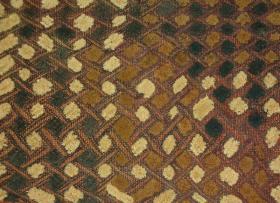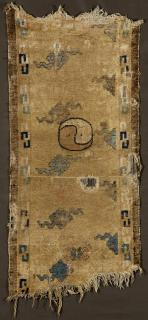UROBORO
UROBORO (also spelled OUROBOROS,etc…) represents a serpent or a dragon biting its own tail and forming a circle. It appeared in almost all ancient cultures and had been important in religious and mythological symbolism, but has also been frequently used in alchemical illustrations, and was used to symbolise concepts such as completion, totality and perfection. It can be also seen as a circular never ending process where end meets start. This cyclic motion is typically encountered when collecting antiques. It is a coming and going of objects from the past, situations re-presented, vibrations of déjà vu. Every time such objects changes proprietary, the cycle starts again.
- active since August, 22, 2007.
- live posting 154
- posting to date 211
- contact

- « first
- ‹ previous
- 1
- 2
- 3
- 4
- Home
- Antique Rugs by Region
- Category
- Profiles
- Post Items Free
- Albums
- Benaki Museum of Islamic Art
- Budapest: Ottoman Carpets
- Gulbenkian Museum
- Islamic Carpets. Brooklyn
- Islamic Textiles. Brooklyn
- Konya Museum: Rugs
- MKG, Hamburg
- MMA: Caucasian Carpets
- MMA: Mamluk Carpets
- MMA: Mughal Indian Carpets
- MMA: Ottoman Carpets
- MMA: Safavid Persian Carpets
- MMA: Turkmen Rugs
- McCoy Jones Kilims
- Ottoman textiles. Met
- Philadelphia Museum
- Rugs and Carpets: Berlin
- Seljuqs at the Met
- TIEM, Istanbul: Carpets
- V&A: Classical Carpets
- Vakiflar Carpets: Istanbul
- Baluch Rugs: Indianapolis
- Gallery Exhibitions
- Jaf an Exhibition
- Alberto Levi Gallery
- Andean Textile
- Christie's London: 2016
- Francesca Galloway
- HALI at 40
- ICOC Washington, DC 2018
- Jajims of the Shahsavan
- London Islamic Week April, 2018
- Mongolian Felts
- Navajo Rugs: JB Moore
- Persian Piled Weavings
- SF Tribal & Textile Art Show 2020
- SF Tribal 2019
- Sotheby's: C. Alexander
- Turkish Prayer Rugs
- Turkmen Main Carpets ICOC 2007
















